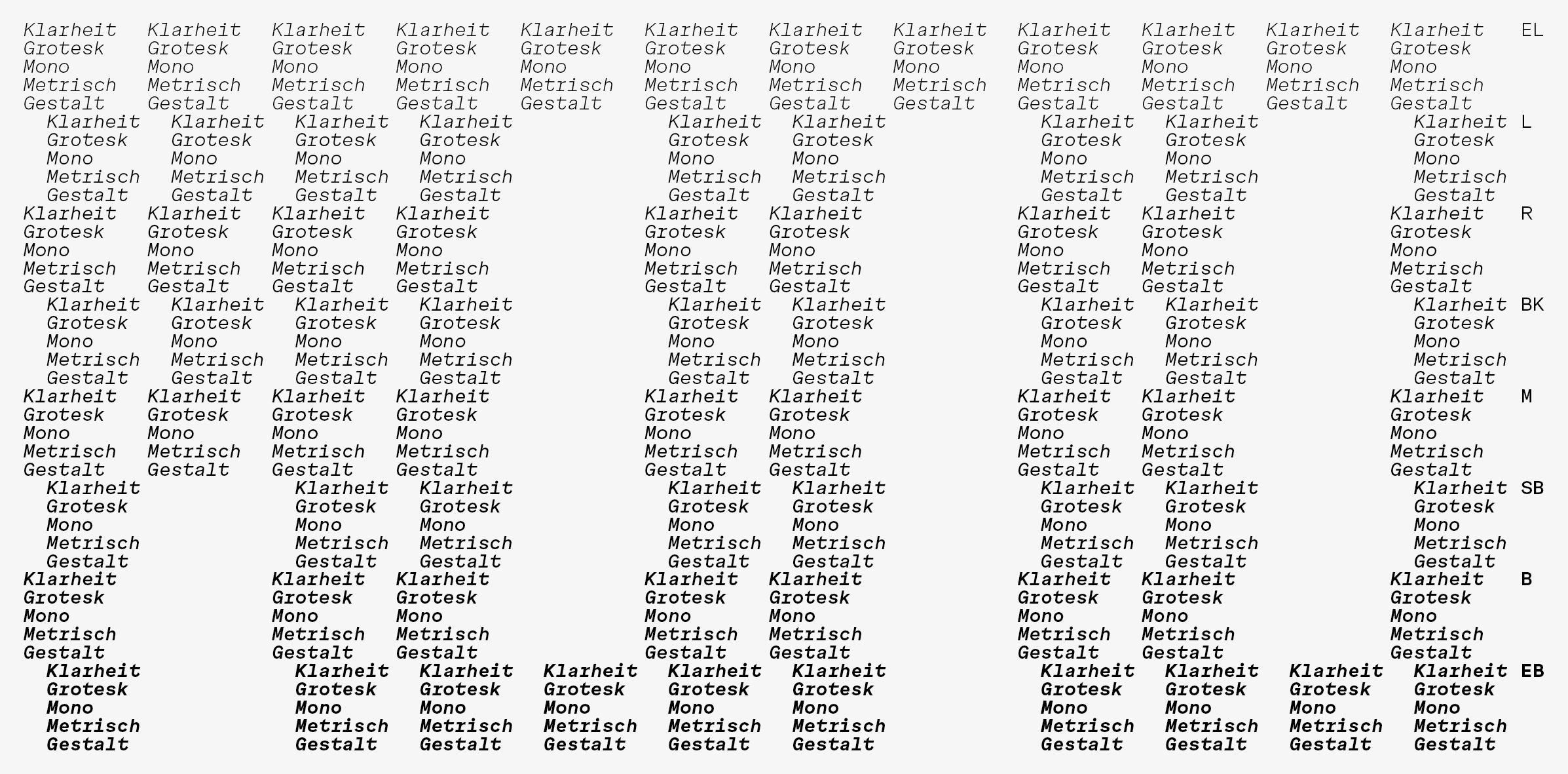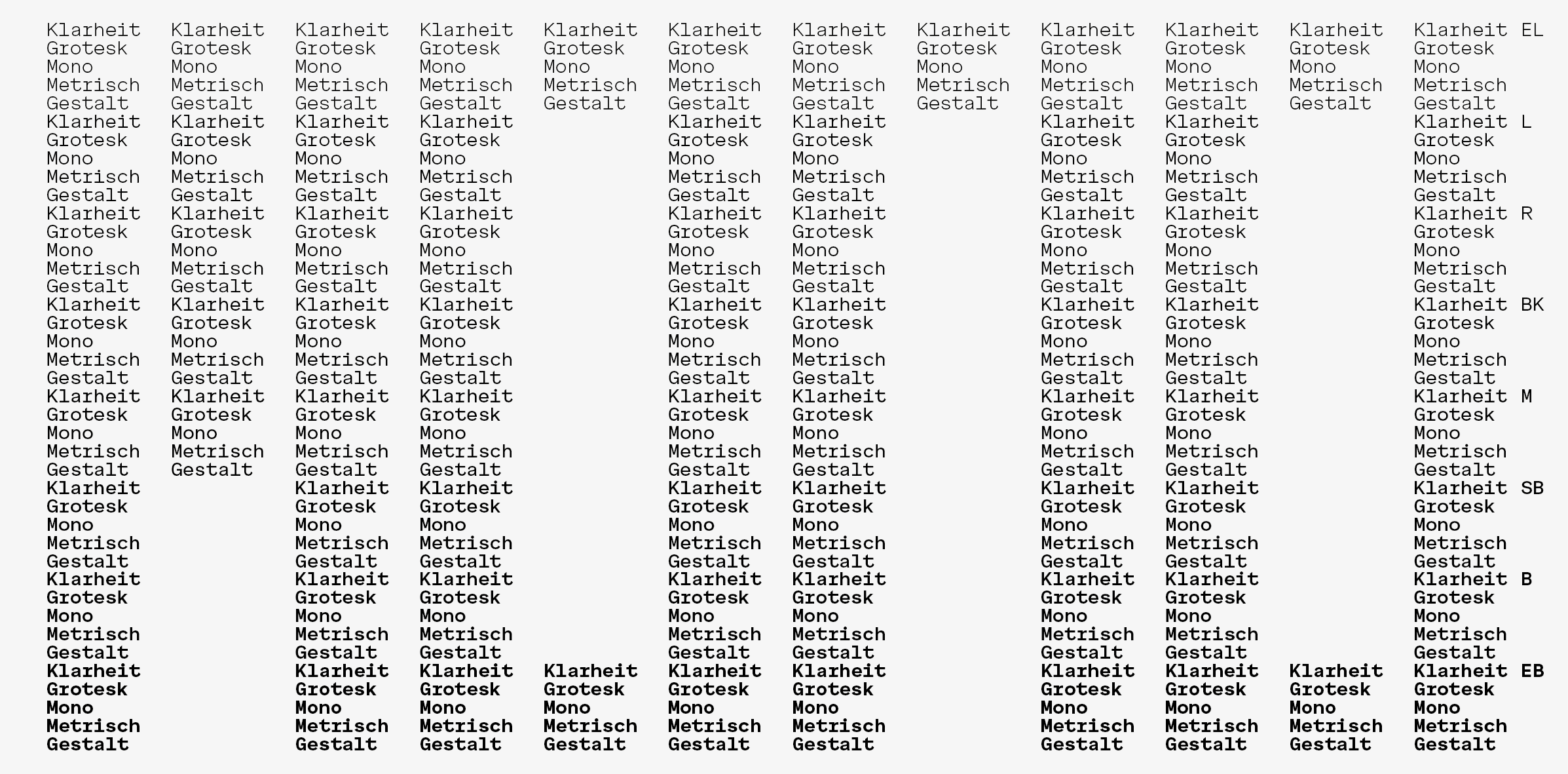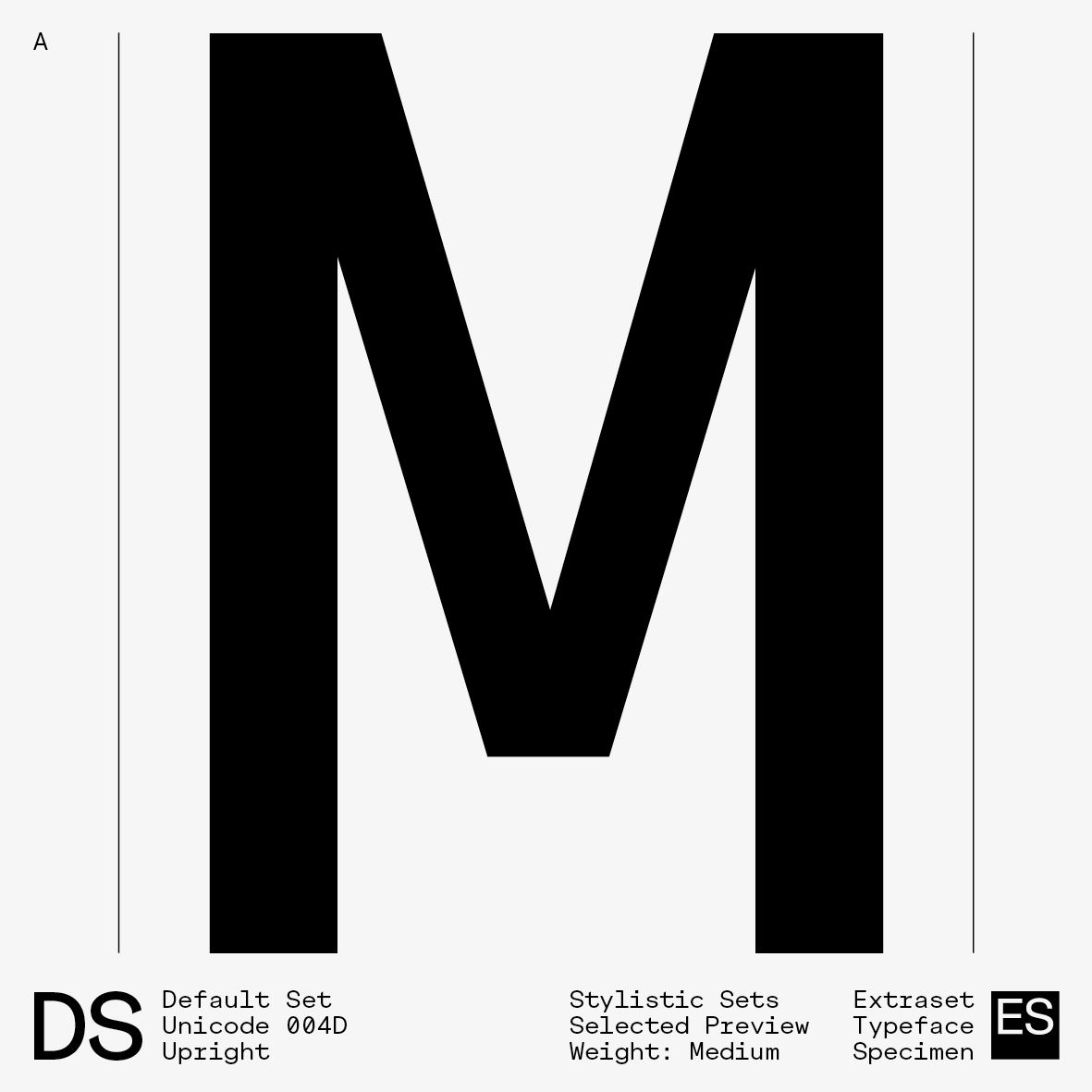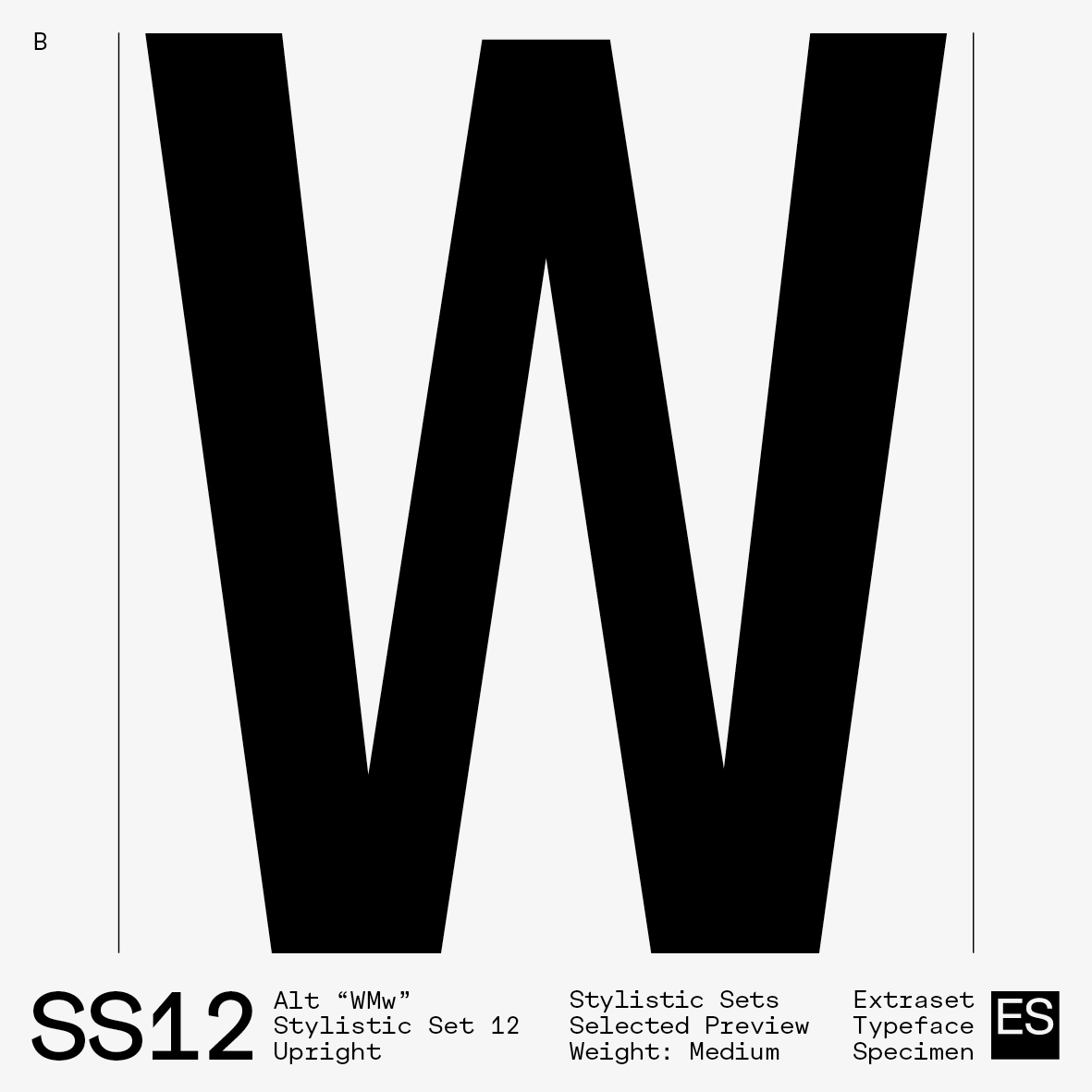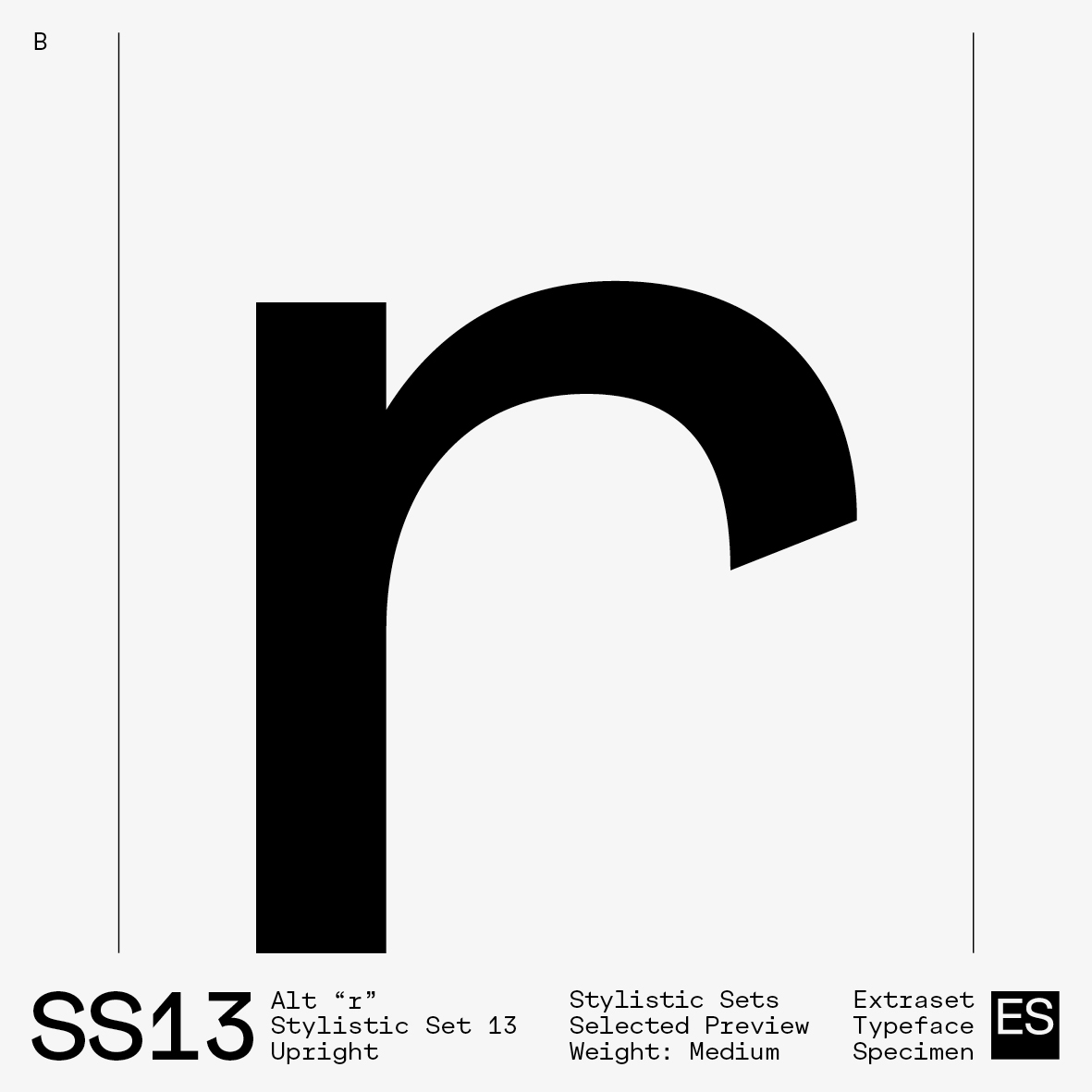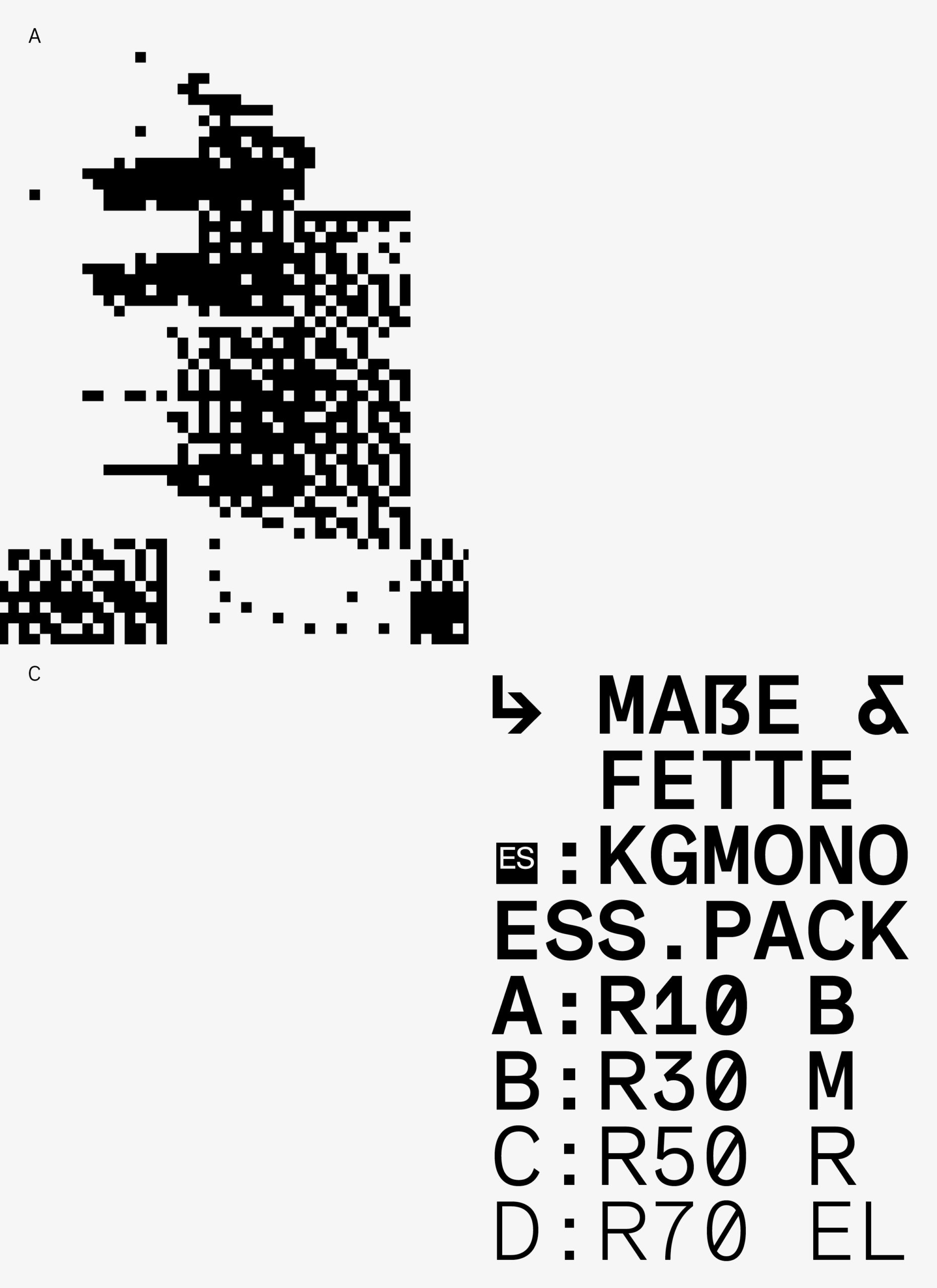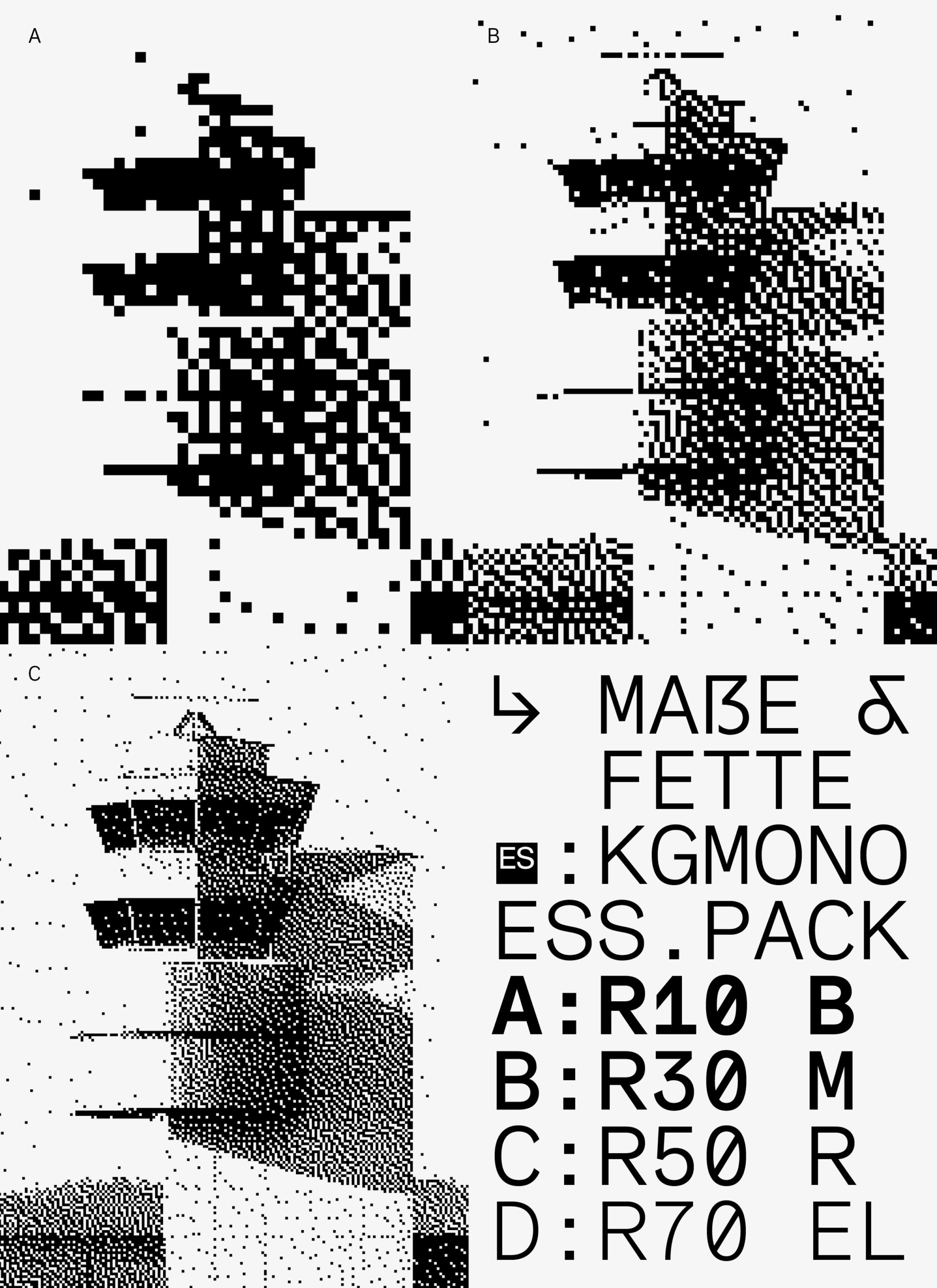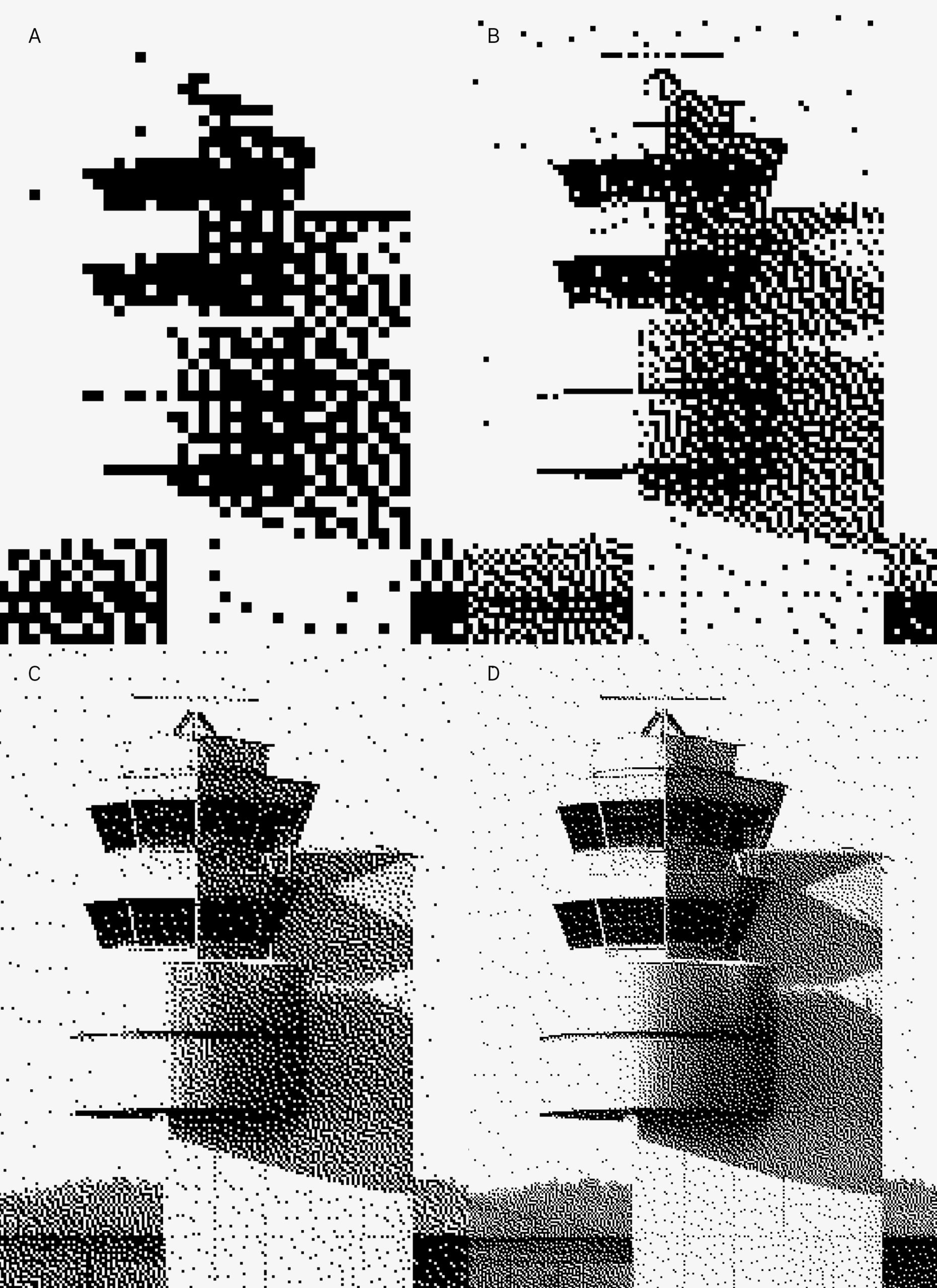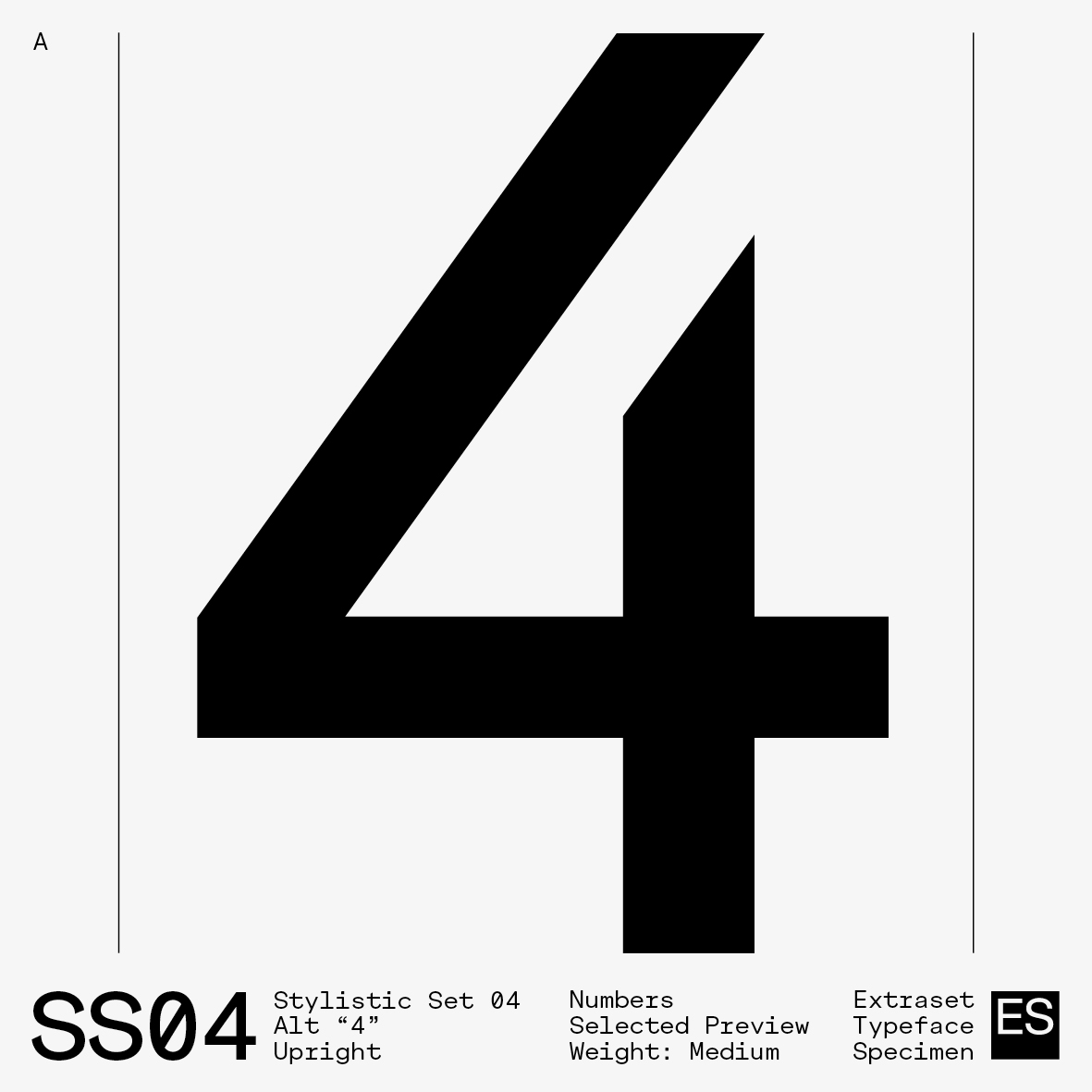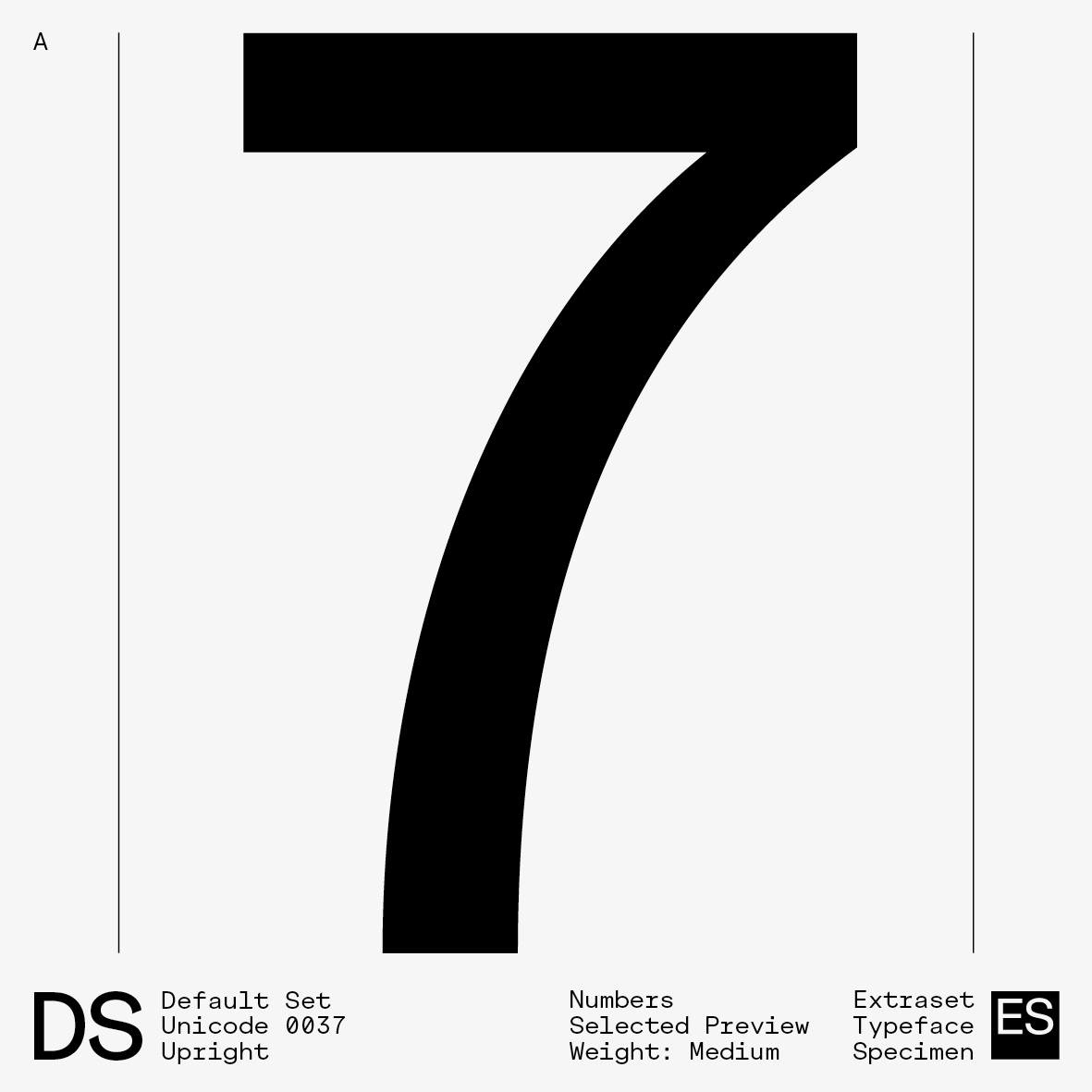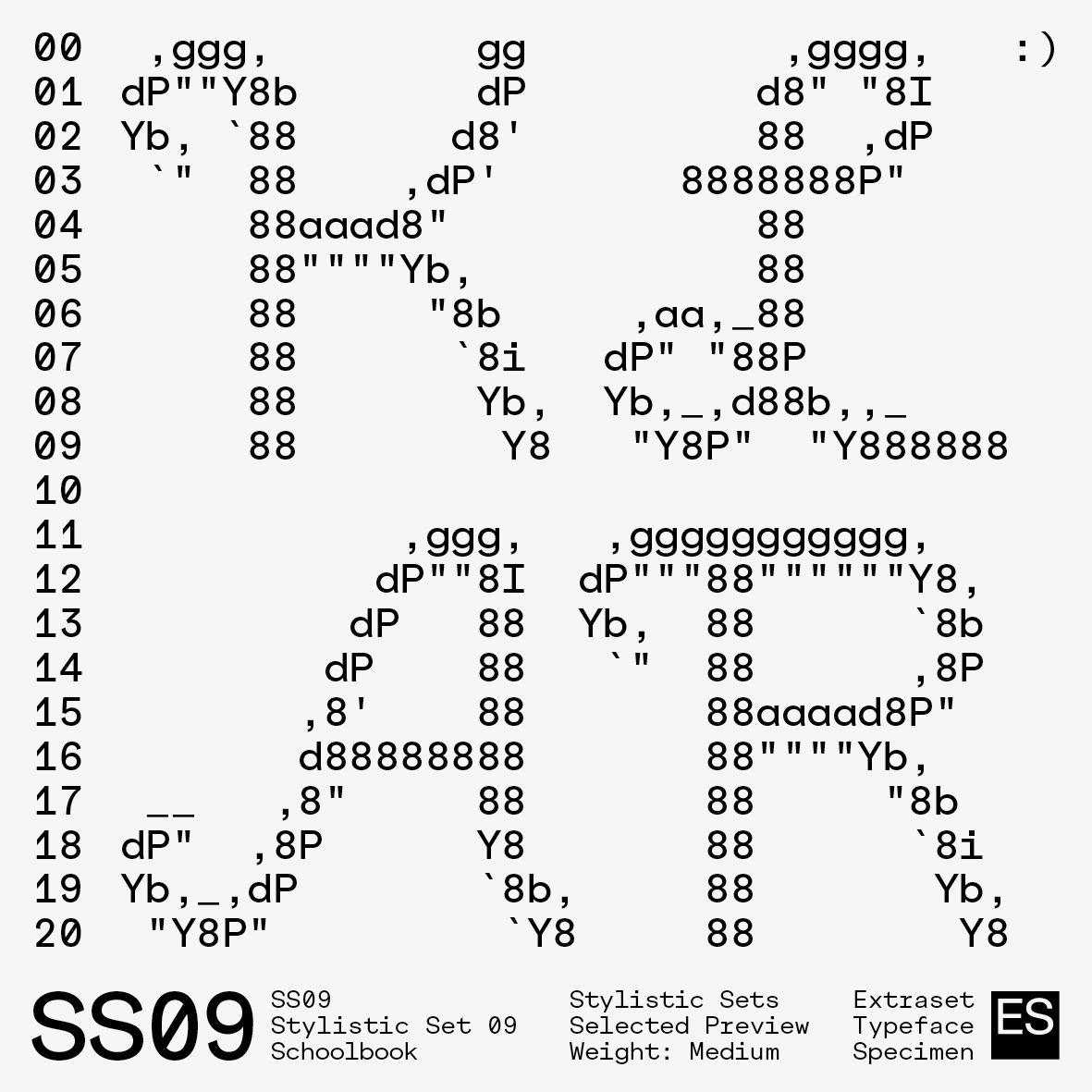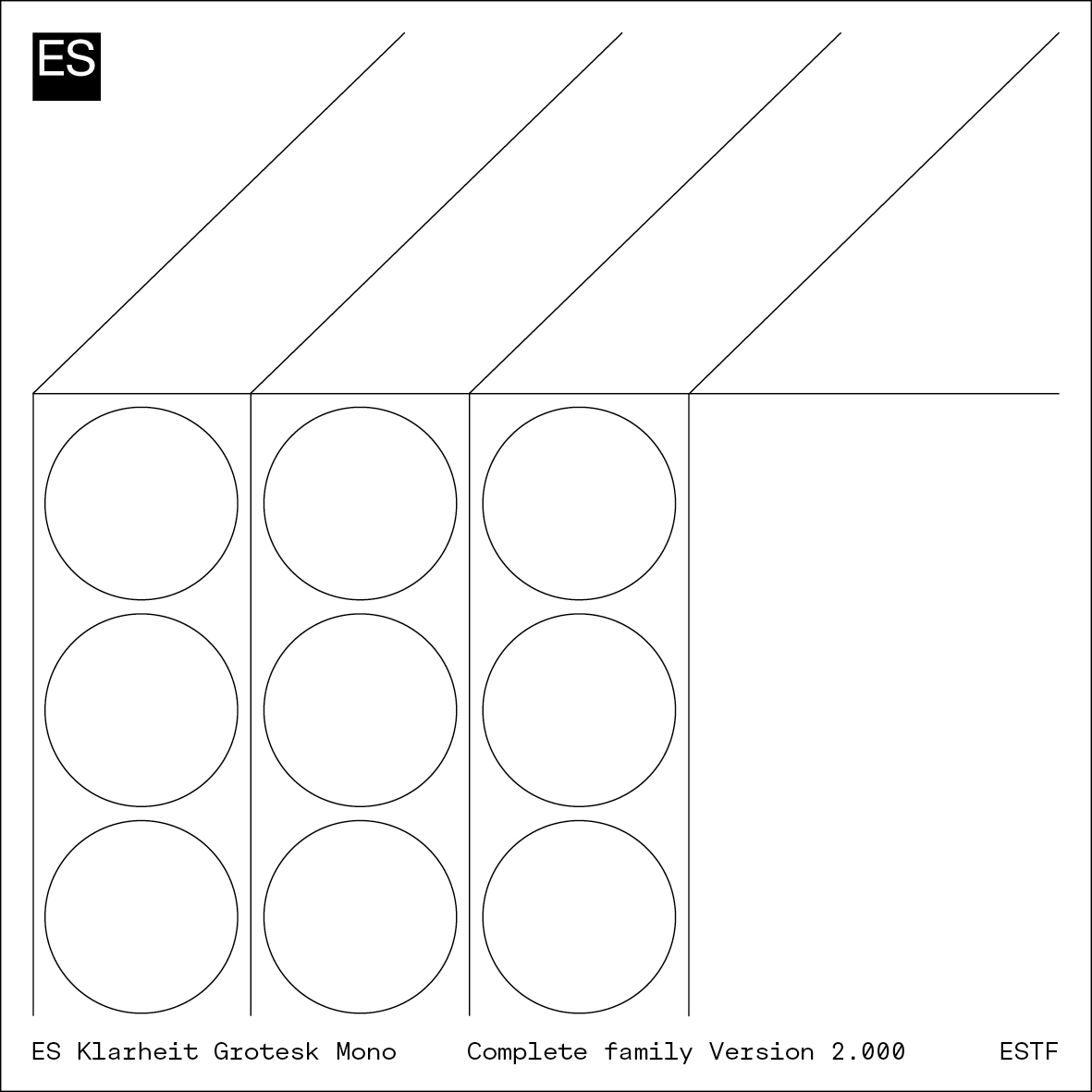
ES Klarheit Grotesk Mono extends as an inevitable need to the Klarheit project. A supplementary option oscillating identically between the two initial major standards present in the initial proportional Grotesk family. Klarheit project seeks to meet the requirements of a more contemporary form of modernism, and features a formula that revisits geometrical solutions drawn from the Bauhaus movement as well as key typographic standards used in 1960s Swiss modernism.
Following these fundamentals, Alex Dujet applied a monocase version to the formula. The OpenType possibilities include 12 versatile stylistic sets that feature a variety of finishes and that matches with the proportional version. The many possible combinations through the use of this palette allow for progressive design choices oscillating between neutral and more assertive graphic positioning. ES Klarheit Grotesk Mono is a useful tool to maximize vertical text alignment requirements.


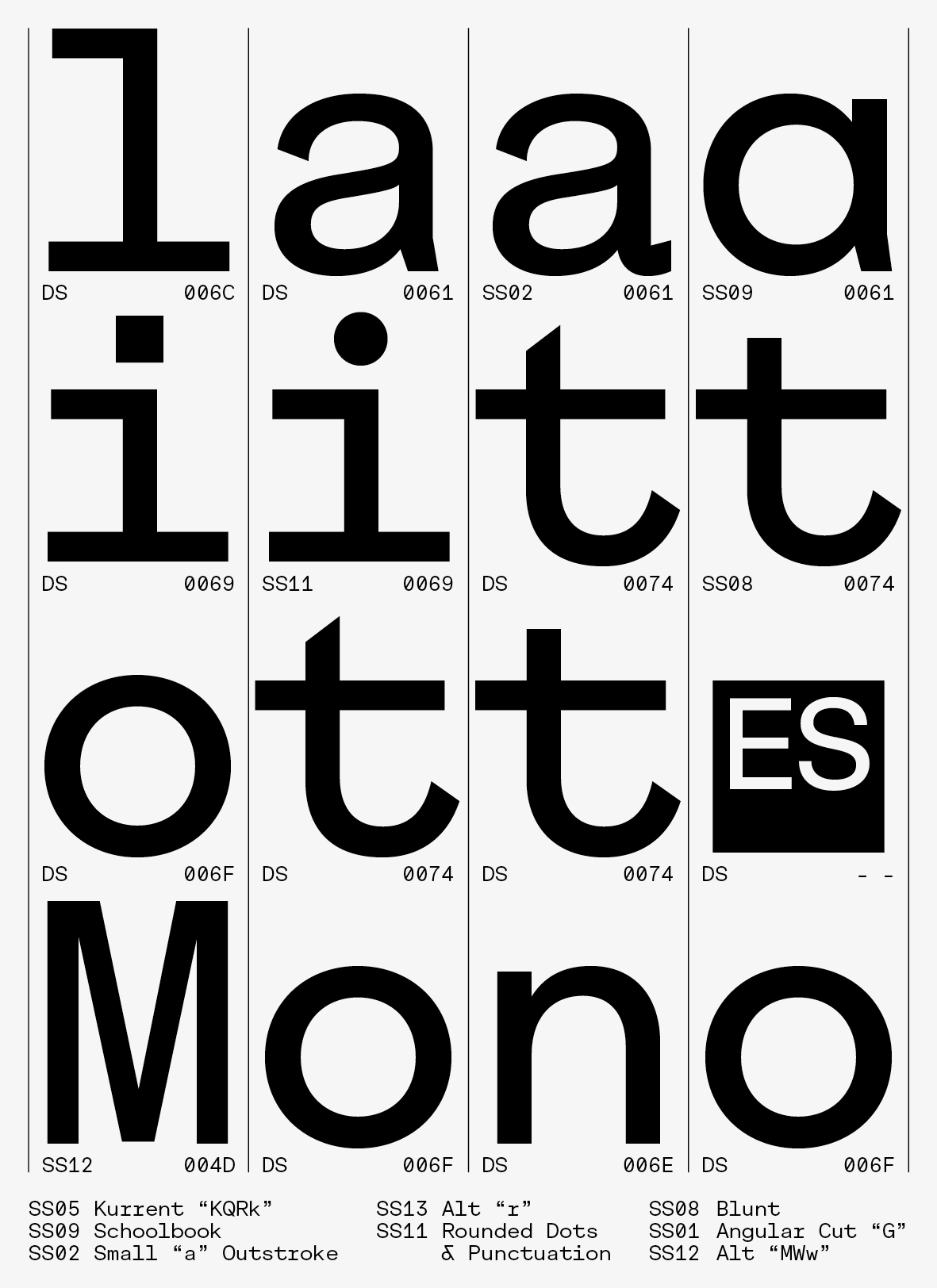

Extralight, Default Set, 24px
Although these results were well known at the time Computer Vision emerged as a new discipline, a great deal of effort has been invested by the community in coming up with algorithms to recover depth from stereo and from other cues that requires multiple images, such as structure from motion or depth from defocus.
Book, Small “a” Outstroke, 24px
Although these results were well known at the time Computer Vision emerged as a new discipline, a great deal of effort has been invested by the community in coming up with algorithms to recover depth from stereo and from other cues that requires multiple images, such as structure from motion or depth from defocus.
Semibold, Sweeping “y”, 24px
Although these results were well known at the time Computer Vision emerged as a new discipline, a great deal of effort has been invested by the community in coming up with algorithms to recover depth from stereo and from other cues that requires multiple images, such as structure from motion or depth from defocus.
Extrabold, Schoolbook, 24px
Although these results were well known at the time Computer Vision emerged as a new discipline, a great deal of effort has been invested by the community in coming up with algorithms to recover depth from stereo and from other cues that requires multiple images, such as structure from motion or depth from defocus.
Extralight Italic, Default Set, 24px
This lack of interaction between Gestalt Psychology and Computer Vision is mainly due to the qualitative nature of Gestalt theory. The mathematical definition of digital image was ignored by Gestaltists and the related issues of blur and noise in image formation were even not qualitatively considered.
Book Italic, Small “a” Outstroke, 24px
This lack of interaction between Gestalt Psychology and Computer Vision is mainly due to the qualitative nature of Gestalt theory. The mathematical definition of digital image was ignored by Gestaltists and the related issues of blur and noise in image formation were even not qualitatively considered.
Semibold Italic, Sweeping “y”, 24px
This lack of interaction between Gestalt Psychology and Computer Vision is mainly due to the qualitative nature of Gestalt theory. The mathematical definition of digital image was ignored by Gestaltists and the related issues of blur and noise in image formation were even not qualitatively considered.
Extrabold Italic, Schoolbook, 24px
This lack of interaction between Gestalt Psychology and Computer Vision is mainly due to the qualitative nature of Gestalt theory. The mathematical definition of digital image was ignored by Gestaltists and the related issues of blur and noise in image formation were even not qualitatively considered.
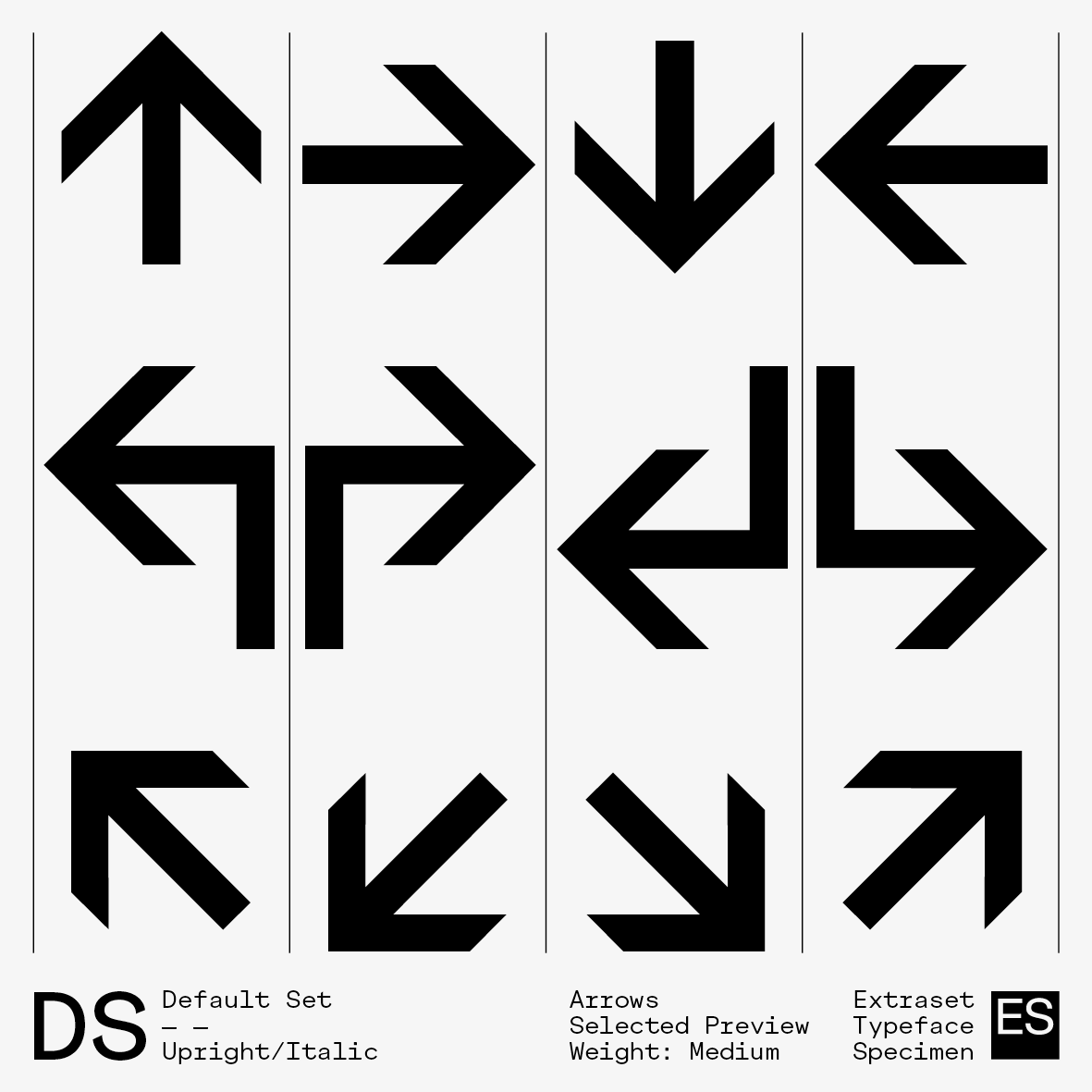
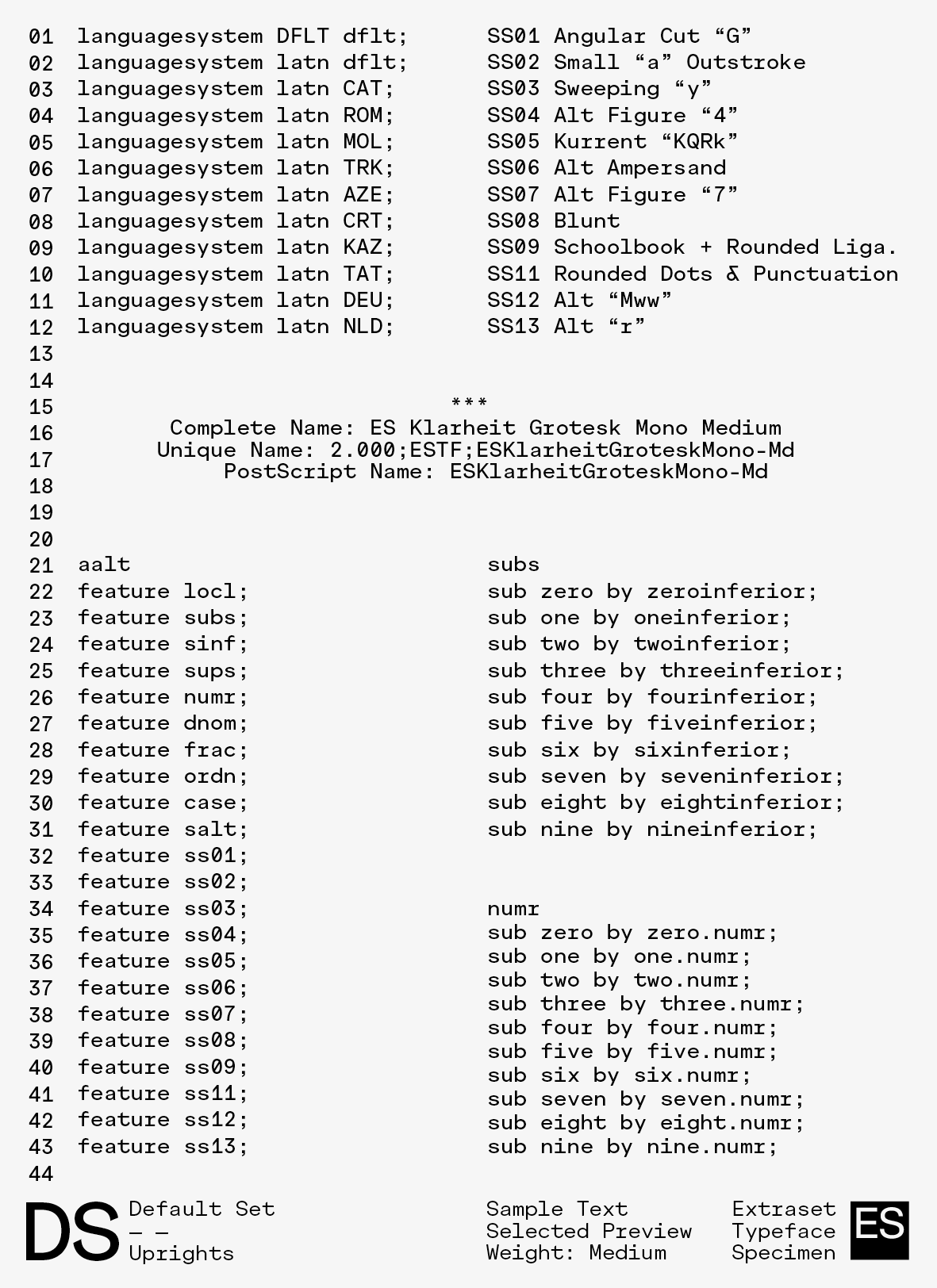
Extralight, Default Set, 18px
These practical realities have somehow mitigated the evident strength of monocular factors as source of depth information in computer-based systems. Indeed, the problems of segmentation with depth and monocular depth cue detection are intimately bound together.
Book, Small “a” Outstroke, 18px
These practical realities have somehow mitigated the evident strength of monocular factors as source of depth information in computer-based systems. Indeed, the problems of segmentation with depth and monocular depth cue detection are intimately bound together.
Semibold, Sweeping “y”, 18px
These practical realities have somehow mitigated the evident strength of monocular factors as source of depth information in computer-based systems. Indeed, the problems of segmentation with depth and monocular depth cue detection are intimately bound together.
Extrabold, Schoolbook, 18px
These practical realities have somehow mitigated the evident strength of monocular factors as source of depth information in computer-based systems. Indeed, the problems of segmentation with depth and monocular depth cue detection are intimately bound together.
Extralight Italic, Default Set, 18px
A good segmentation mask gives extremely clean contours, useful for monocular depth cue detection, while monocular depth cues constitute an excellent source of information to be exploited in low-level segmentation.
Book Italic, Small “a” Outstroke, 18px
A good segmentation mask gives extremely clean contours, useful for monocular depth cue detection, while monocular depth cues constitute an excellent source of information to be exploited in low-level segmentation.
Semibold Italic, Sweeping “y”, 18px
A good segmentation mask gives extremely clean contours, useful for monocular depth cue detection, while monocular depth cues constitute an excellent source of information to be exploited in low-level segmentation.
Extrabold Italic, Schoolbook”, 18px
A good segmentation mask gives extremely clean contours, useful for monocular depth cue detection, while monocular depth cues constitute an excellent source of information to be exploited in low-level segmentation.
This lack of interaction between Gestalt Psychology and Computer Vision is mainly due to the qualitative nature of Gestalt theory.
- Italic
- Width
- Weights
A Á Ă Ắ Ặ Ằ Ẳ Ẵ Ǎ  Ấ Ậ Ầ Ẩ Ẫ Ä Ạ À Ả Ā Ą Å Ã Æ B C Ć Č Ç Ĉ Ċ D Ð Ď Đ E É Ĕ Ě Ê Ế Ệ Ề Ể Ễ Ë Ė Ẹ È Ẻ Ē Ę Ẽ F Ƒ G Ğ Ǧ Ĝ Ģ Ġ G Ğ Ǧ Ĝ Ģ Ġ H Ħ Ĥ I IJ Í Ĭ Ǐ Î Ï İ Ị Ì Ỉ Ī Į Ĩ J Ĵ K Ķ K Ķ K Ķ L Ĺ Ľ Ļ Ŀ Ł M N Ń Ň Ņ Ŋ Ñ O Ó Ŏ Ǒ Ô Ố Ộ Ồ Ổ Ỗ Ö Ọ Ò Ỏ Ơ Ớ Ợ Ờ Ở Ỡ Ő Ō Ø Ø Õ Œ P Þ Q Q Q R Ŕ Ř Ŗ R Ŕ Ŗ R S Ś Š Ş Ŝ Ș ẞ T Ŧ Ť Ţ Ț U Ú Ŭ Ǔ Û Ü Ǘ Ǚ Ǜ Ǖ Ụ Ù Ủ Ư Ứ Ự Ừ Ử Ữ Ű Ū Ų Ů Ũ V W Ẃ Ŵ Ẅ Ẁ X Y Ý Ŷ Ÿ Ỵ Ỳ Ỷ Ȳ Ỹ Z Ź Ž Ż a á ă ắ ặ ằ ẳ ẵ ǎ â ấ ậ ầ ẩ ẫ ä ạ à ả ā ą å ã a á ă ắ ặ ằ ẳ ẵ ǎ â ấ ậ ầ ẩ ẫ ä ạ à ả ā ą å ã a á ă ắ ặ ằ ẳ ẵ ǎ â ấ ậ ầ ẩ ẫ ä ạ à ả ā ą å ã æ b c ć č ç ĉ ċ d ð ď đ d ď đ e é ĕ ě ê ế ệ ề ể ễ ë ė ẹ è ẻ ē ę ẽ f g ğ ǧ ĝ ģ ġ h ħ ĥ i ı í ĭ ǐ î ï ị ì ỉ ij ī į ĩ j ȷ ĵ k ķ k ķ k ķ l ĺ ľ ļ ŀ ł m n ń ň ņ ŋ ñ o ó ŏ ǒ ô ố ộ ồ ổ ỗ ö ọ ò ỏ ơ ớ ợ ờ ở ỡ ő ō ø õ œ p þ q r ŕ ř ŗ s ś š ş ŝ ș ß t ŧ ť ţ ț t ŧ ť ţ ț u ú ŭ ǔ û ü ǘ ǚ ǜ ǖ ụ ù ủ ư ứ ự ừ ử ữ ű ū ų ů ũ v w ẃ ŵ ẅ ẁ x y ý ŷ ÿ ỵ ỳ ỷ ȳ ỹ y ý ŷ ÿ ỵ ỳ ỷ ȳ ỹ z ź ž ż ª ª ª º Δ Ω μ π 0 1 1 2 3 4 4 5 6 7 7 8 9 ⁰ ¹ ¹ ² ³ ⁴ ⁴ ⁵ ⁶ ⁷ ⁷ ⁸ ⁹ ⁄ ½ ¼ ¼ ¾ ¾ . , : ; … ! ¡ ? ¿ · • * # / \ ( ) { } [ ] - – — _ ‚ „ “ ” ‘ ’ « » ‹ › " ' ¢ ¤ $ € ƒ ₺ ₽ £ ¥ + − × ÷ = ≠ > < ≥ ≤ ± ≈ ¬ ~ ^ ∞ ∫ Ω ∆ ∏ ∑ √ µ ∂ % ‰ ↑ ↗ → ↘ ↓ ↙ ← ↖ ↰ ↱ ↲ ↳ ⇆ ◊ @ & & ¶ § © ℗ ® ® ™ ° | ¦ † ‡ ℮ ¨ ˙ ` ´ ˝ ˆ ˇ ˘ ˚ ˜ ¯ ¸ ˛
A Á Ă Ắ Ặ Ằ Ẳ Ẵ Ǎ  Ấ Ậ Ầ Ẩ Ẫ Ä Ạ À Ả Ā Ą Å Ã Æ B C Ć Č Ç Ĉ Ċ D Ð Ď Đ E É Ĕ Ě Ê Ế Ệ Ề Ể Ễ Ë Ė Ẹ È Ẻ Ē Ę Ẽ F Ƒ G Ğ Ǧ Ĝ Ģ Ġ G Ğ Ǧ Ĝ Ģ Ġ H Ħ Ĥ I IJ Í Ĭ Ǐ Î Ï İ Ị Ì Ỉ Ī Į Ĩ J Ĵ K Ķ K Ķ K Ķ L Ĺ Ľ Ļ Ŀ Ł M N Ń Ň Ņ Ŋ Ñ O Ó Ŏ Ǒ Ô Ố Ộ Ồ Ổ Ỗ Ö Ọ Ò Ỏ Ơ Ớ Ợ Ờ Ở Ỡ Ő Ō Ø Ø Õ Œ P Þ Q Q Q R Ŕ Ř Ŗ R Ŕ Ŗ R S Ś Š Ş Ŝ Ș ẞ T Ŧ Ť Ţ Ț U Ú Ŭ Ǔ Û Ü Ǘ Ǚ Ǜ Ǖ Ụ Ù Ủ Ư Ứ Ự Ừ Ử Ữ Ű Ū Ų Ů Ũ V W Ẃ Ŵ Ẅ Ẁ X Y Ý Ŷ Ÿ Ỵ Ỳ Ỷ Ȳ Ỹ Z Ź Ž Ż a á ă ắ ặ ằ ẳ ẵ ǎ â ấ ậ ầ ẩ ẫ ä ạ à ả ā ą å ã a á ă ắ ặ ằ ẳ ẵ ǎ â ấ ậ ầ ẩ ẫ ä ạ à ả ā ą å ã a á ă ắ ặ ằ ẳ ẵ ǎ â ấ ậ ầ ẩ ẫ ä ạ à ả ā ą å ã æ b c ć č ç ĉ ċ d ð ď đ d ď đ e é ĕ ě ê ế ệ ề ể ễ ë ė ẹ è ẻ ē ę ẽ f g ğ ǧ ĝ ģ ġ h ħ ĥ i ı í ĭ ǐ î ï ị ì ỉ ij ī į ĩ j ȷ ĵ k ķ k ķ k ķ l ĺ ľ ļ ŀ ł m n ń ň ņ ŋ ñ o ó ŏ ǒ ô ố ộ ồ ổ ỗ ö ọ ò ỏ ơ ớ ợ ờ ở ỡ ő ō ø õ œ p þ q r ŕ ř ŗ s ś š ş ŝ ș ß t ŧ ť ţ ț t ŧ ť ţ ț u ú ŭ ǔ û ü ǘ ǚ ǜ ǖ ụ ù ủ ư ứ ự ừ ử ữ ű ū ų ů ũ v w ẃ ŵ ẅ ẁ x y ý ŷ ÿ ỵ ỳ ỷ ȳ ỹ y ý ŷ ÿ ỵ ỳ ỷ ȳ ỹ z ź ž ż ª ª ª º Δ Ω μ π 0 1 1 2 3 4 4 5 6 7 7 8 9 ⁰ ¹ ¹ ² ³ ⁴ ⁴ ⁵ ⁶ ⁷ ⁷ ⁸ ⁹ ⁄ ½ ¼ ¼ ¾ ¾ . , : ; … ! ¡ ? ¿ · • * # / \ ( ) { } [ ] - – — _ ‚ „ “ ” ‘ ’ « » ‹ › " ' ¢ ¤ $ € ƒ ₺ ₽ £ ¥ + − × ÷ = ≠ > < ≥ ≤ ± ≈ ¬ ~ ^ ∞ ∫ Ω ∆ ∏ ∑ √ µ ∂ % ‰ ↑ ↗ → ↘ ↓ ↙ ← ↖ ↰ ↱ ↲ ↳ ⇆ ◊ @ & & ¶ § © ℗ ® ® ™ ° | ¦ † ‡ ℮ ¨ ˙ ` ´ ˝ ˆ ˇ ˘ ˚ ˜ ¯ ¸ ˛
Language Coverage
Basic Latin-1 / Mac Roman
Latin Extended-A,
Western Europe, Central Europe,
South-West Europe,
Vietnamese, Pinyin
Abenaki, Afaan Oromo, Afar, Afrikaans, Albanian, Alsatian, Amis, Anuta, Aragonese, Aranese, Aromanian, Arrernte, Arvanitic, Asturian, Atayal, Aymara, Azerbaijani, Bashkir, Basque, Belarusian, Bemba, Bikol, Bislama, Bosnian, Breton, Bulgarian Romanization, Cape Verdean, Catalan, Cebuano, Chamorro, Chavacano, Chichewa, Chickasaw, Chinese Pinyin, Cimbrian, Cofan, Cornish, Corsican, Creek, Crimean Tatar, Croatian, Czech, Danish, Dawan, Delaware, Dholuo, Drehu, Dutch, English, Esperanto, Estonian, Faroese, Fijian, Filipino, Finnish, Folkspraak, French, Frisian, Friulian, Gagauz, Galician, Ganda, Genoese, German, Gikuyu, Gooniyandi, Greenlandic, Guadeloupean, Gwichin, Haitian Creole, Han, Hawaiian, Hiligaynon, Hopi, Hotcak, Hungarian, Icelandic, Ido, Igbo, Ilocano, Indonesian, Interglossa, Interlingua, Irish, Istroromanian, Italian, Jamaican, Javanese, Jerriais, Kaingang, Kala Lagaw Ya, Kapampangan, Kaqchikel, Karakalpak, Karelian, Kashubian, Kikongo, Kinyarwanda, Kiribati, Kirundi, Klingon, Kurdish, Ladin, Latin, Latino Sine, Latvian, Lithuanian, Lojban, Lombard, Low Saxon, Luxembourgish, Maasai, Makhuwa, Malay, Maltese, Manx, Maori, Marquesan, Meglenoromanian, Meriam Mir, Mirandese, Mohawk, Moldovan, Montagnais, Montenegrin, Murrinhpatha, Nagamese Creole, Nahuatl, Ndebele, Neapolitan, Ngiyambaa, Niuean, Noongar, Norwegian, Novial, Occidental, Occitan, Oshiwambo, Ossetian, Palauan, Papiamento, Piedmontese, Polish, Portuguese, Potawatomi, Qeqchi, Quechua, Rarotongan, Romanian, Romansh, Rotokas, Sami Inari, Sami Lule, Sami Northern, Sami Southern, Samoan, Sango, Saramaccan, Sardinian, Scottish Gaelic, Serbian, Seri, Seychellois, Shawnee, Shona, Sicilian, Silesian, Slovak, Slovenian, Slovio, Somali, Sorbian Lower, Sorbian Upper, Sotho Northern, Sotho Southern, Spanish, Sranan, Sundanese, Swahili, Swazi, Swedish, Tagalog, Tahitian, Tetum, Tok Pisin, Tokelauan, Tongan, Tshiluba, Tsonga, Tswana, Tumbuka, Turkish, Turkmen, Tuvaluan, Tzotzil, Uzbek, Venetian, Vepsian, Vietnamese, Volapuk, Voro, Wallisian, Walloon, Waraywaray, Warlpiri, Wayuu, Welsh, Wikmungkan, Wiradjuri, Wolof, Xavante, Xhosa, Yapese, Yindjibarndi, Zapotec, Zazaki, Zulu, Zuni

